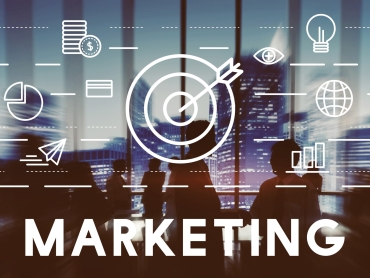Click. Wait. Frustration. Leave.
That’s the journey millions of users take every day when visiting a slow-loading website. In an online world where attention spans are shrinking and competition is only a click away, page load speed has become one of the most critical factors influencing user engagement.
It’s no longer just a “nice-to-have” technical improvement. Website speed impacts user experience, brand image, SEO rankings, and business revenue.
In this ultimate guide, we’ll explore:
Why page load speed is so important for engagement
The psychology of user patience
Real-world statistics and case studies
How slow sites hurt businesses
Technical and non-technical fixes for performance
Tools for measuring and improving site speed
Future trends in website performance
FAQs based on what users search for
By the end, you’ll understand why every second counts and how to make speed your competitive advantage.
⏳ Why Page Load Speed Shapes User Engagement
Page load speed is the time it takes for a webpage to fully display its content after a user clicks a link. This metric has a direct impact on engagement.
Research proves:
40% of users abandon websites that take more than 3 seconds to load.
A 1-second delay in load time can reduce conversions by 7%.
Bounce rates increase by 32% when load time goes from 1 to 3 seconds.
👉 In other words, speed is the first impression your brand makes. If your website loads fast, users are more likely to explore. If it doesn’t, they’re gone—often for good.
The Coffee Shop Analogy: Why Patience Runs Thin
Imagine walking into a busy coffee shop. If the barista takes 15 minutes to prepare your order, you’ll probably walk out and never return.
Websites work the same way. Users expect instant gratification. If your digital “barista” (your site) takes too long, they’ll move to the shop next door (your competitor).
That’s why speed = retention.
Statistics That Prove the Power of Page Speed
Here are some powerful numbers that show how much speed matters:
Google research: 53% of mobile users leave a site that takes longer than 3 seconds to load.
Financial Times case study: Reducing load time by just a few seconds increased engagement by 5%.
Amazon’s report: A 100-millisecond delay could cost the company 1% in sales revenue.
BBC stats: They lose 10% of users for every additional second a page takes to load.
Google ranking factor: Page speed directly affects SEO, meaning slow sites appear lower in search results.
Engagement Slips When Speed Slows
Slow websites trigger a chain reaction of negative outcomes:
Bounce rates increase – Users abandon the site quickly.
Time on site decreases – Fewer opportunities to engage.
Fewer interactions – Users skip videos, forms, or shopping carts.
Emotional detachment – People associate slowness with inefficiency.
Loyalty fades – Users don’t return and rarely recommend the site.
This is why companies that invest in faster websites see higher engagement, more repeat visitors, and stronger brand loyalty.
Beyond Frustration: Customer Satisfaction and Brand Image
Page speed is not just about technical performance—it’s about respect.
A fast site says: “We value your time.”
A slow site says: “We don’t care enough.”
User satisfaction is fragile. One slow experience can ruin trust and push a customer to your competitor forever.
For example, a grandparent trying to view family photos online might abandon the site if it’s too slow. That’s not just a lost visit—it’s a lost emotional connection.
Page Load Speed and SEO Rankings
Search engines reward fast-loading sites because they provide a better experience.
Google Page Experience Update (Core Web Vitals): Includes metrics like Largest Contentful Paint (LCP) and First Input Delay (FID), directly tied to speed.
Mobile-first indexing: Google prioritizes mobile performance in rankings.
68% of online experiences begin with a search. A fast site increases your chances of being found.
👉 Faster site = better SEO = more traffic = more engagement.
Technical Factors That Influence Page Speed
1. Hosting Quality
A slow server = a slow site. Reliable hosting is the foundation of performance.
2. Image Optimization
Uncompressed images can slow pages by several seconds. Modern formats like WebP reduce size without losing quality.
3. Caching
Storing static versions of pages reduces server strain and speeds up delivery.
4. Code Optimization
Too much CSS, JavaScript, or unused plugins create bloat. Clean, minimal code = faster load times.
5. Third-Party Scripts
Ads, tracking codes, and embedded widgets can add precious seconds to load time.
6. Content Delivery Network (CDN)
A CDN distributes your content across global servers, reducing latency.
Tools to Measure Page Speed
Here are some must-use tools:
Google PageSpeed Insights – Detailed Core Web Vitals analysis.
GTmetrix – Performance scores with suggestions.
Pingdom Tools – Easy-to-read speed reports.
Lighthouse (Chrome DevTools) – Developer-friendly performance auditing.
Case Studies: How Speed Translates Into Results
Walmart – Found that for every 1-second improvement in load time, conversions increased by 2%.
BBC – Discovered they lost 10% of users per additional second of load time.
Financial Times – Saw a 5% increase in engagement after shaving a few seconds off.
Pinterest – Reduced wait times by 40% and saw 15% growth in SEO traffic.
Best Practices for Improving Website Speed
Choose fast, reliable hosting.
Use a CDN.
Optimize and compress images.
Enable lazy loading for videos/images.
Minify CSS, HTML, and JavaScript.
Limit plugins and third-party scripts.
Implement browser caching.
Test regularly with speed tools.
The Future of Website Performance
Looking ahead, speed will matter even more.
5G networks mean users expect instant loading.
AI-powered optimization will auto-tune performance.
Voice search relies on instant answers—slow sites will miss out.
AR/VR experiences will demand lightning-fast delivery.
👉 Tomorrow’s web will be faster, leaner, and more user-first than ever.
FAQ: Page Load Speed and User Engagement
Q1: What is a good page load speed?
Google recommends under 2.5 seconds for best results.
Q2: How does speed affect conversions?
Even a 1-second delay can lower conversion rates by up to 7%.
Q3: Does mobile speed matter more than desktop?
Yes—most searches are now mobile-first, and Google prioritizes mobile performance.
Q4: What’s the cheapest way to improve speed?
Compress images, use free caching plugins, and limit unnecessary scripts.
Q5: Is speed more important than design?
Both matter, but without speed, users won’t stay long enough to appreciate design.
Final Thoughts
Page load speed is not just a technical detail—it’s a business-critical factor.
It shapes user engagement.
It influences SEO rankings.
It affects brand reputation and conversions.
Simply put: fast sites win, slow sites lose.
In the digital age, speed is a signal of professionalism, trust, and respect for your audience. If you want to keep users engaged, boost conversions, and grow online, there’s no question about it: every second counts.








